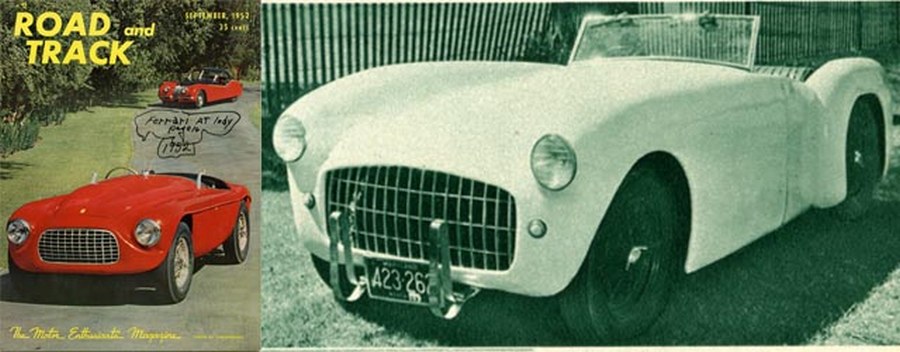
Hi Gang…
Imagine how excited the automotive world was with the introduction of fiberglass sports cars at the November ’51 Petersen Motorama. And by the Fall of ’52 – nearly one year later – enthusiasts and entrepreneurs across the country were building fiberglass bodies, cars, sports cars and race cars like a storm.
This is a short article but think of how early it was – less than one year from the debut of fiberglass – and here were three new proposed fiberglass sports cars:
- Vaughan Singer – based on a Glasspar G2 body (Bill Tritt helped build it too!)
- BMC Singer designed and built by Kjell Qvale of British Motor Cars (BMC) in San Francisco
- And American Enterprises MG based special
American Enterprises? Who in the world were they?
Well….for those of you who read the article earlier today on Forgotten Fiberglass, they were owned by Stewart Greenfield who would – after running his company from ’52 thru early ’55 – take his firm to Clearfield, Pennsylvania and create Clearfield Plastics.
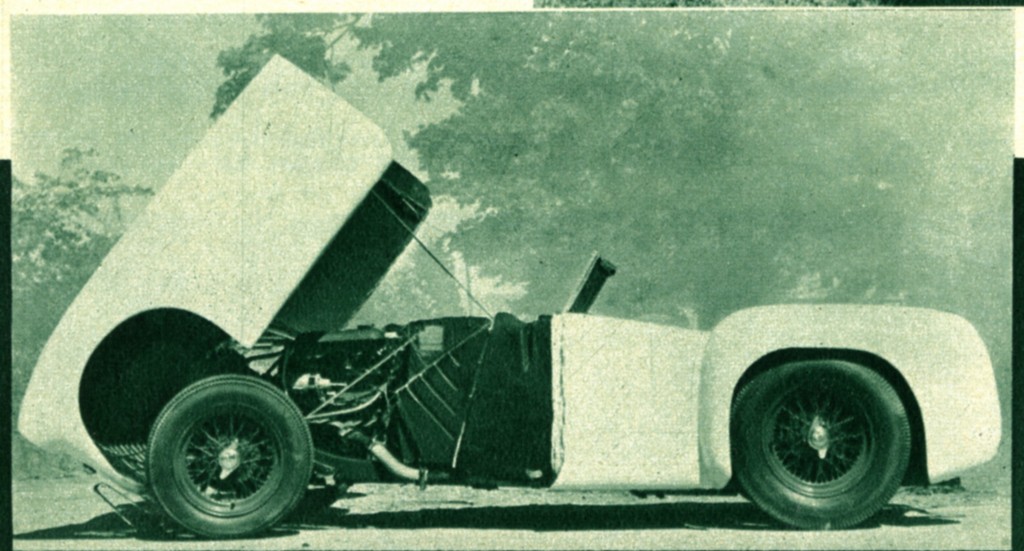
American Enterprises, A Baltimore Firm, is Producing A Fiberglass Body. The Example Exhibited Here Is Mounted On A TC MG Chassis; However, It Will Fit Newer TDs and Mk IIs.
In ’56 when Clearfield Plastics shut down, Harry Heim took his newly designed sports car to Ed Almquist where it took hold and became the leading fiberglass sports car body model for Almquist Engineering for several years straight.
So the legacy of Steward Greenfield and American Enterprises led to Harry Heim and Clearfield Plastics which in turn led to Ed Almquist and Almquist Engineering.
Who said that research wasn’t fun
And now, let’s look at the article and associated pictures:
Fiberglass Bodies:
Road and Track, September 1952
Fiberglass – one of the Twentieth Century’s most practical developments – holds forth great promise in its ability to replace steel, wood and aluminum in manufacturing processes. It is no wonder then that sports car enthusiasts have turned to this combination of fibrous glass and plastic as an answer to some of the problems of body construction.
By this time, readers are familiar with such competition cars as Sterling Edward’s new Edwards Special – which runs a Chrysler engine in a Henry J chassis – Henry Manney’s newly developed (by McAfee Engineering) blown Crosley engine which is mounted in a special tubular frame, and Charles Manning’s Mercury Special.
All three of these cars have successfully employed fiberglass bodies. Any number of MGs and the like have used fiberglass components, such as doors, cycle fenders and assorted panel work.
On this page, Road and Track presents some of the newer fiberglass designs.
Summary:
So….which of these cars have we found???
None.
- No BMC Singers have been found (and more than one was built).
- The Glasspar G2 based “Vaughan Singer” is missing (just one was built)
- And no one has ever even sent in a picture of an American Enterprises sports car – so far the pictures in today’s article are the only two pictures that exist.
Anyone want to go on a “car-archeology” trip with me? And where in the world should we start? Finding just one of these – let alone all three of them – would be a fantastic and exciting find to share, here on Forgotten Fiberglass.
Hope you enjoyed the story, and until next time…
Glass on gang…
Geoff
——————————————————————-
Click on the Images Below to View Larger Pictures
——————————————————————-
- Kjell Qvale And His BMC Singer
- Here’s The Glasspar G2 Bodied Vaughan Singer
- Here’s Another Picture of the American Enterprises Fiberglass Car.

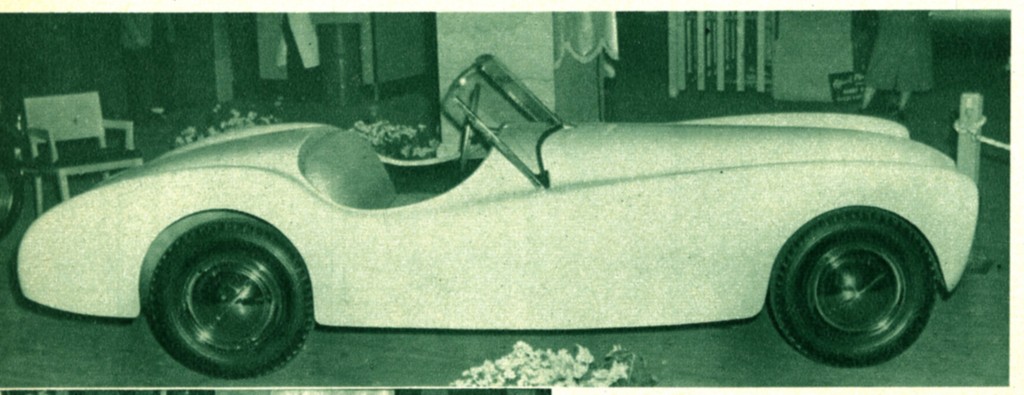
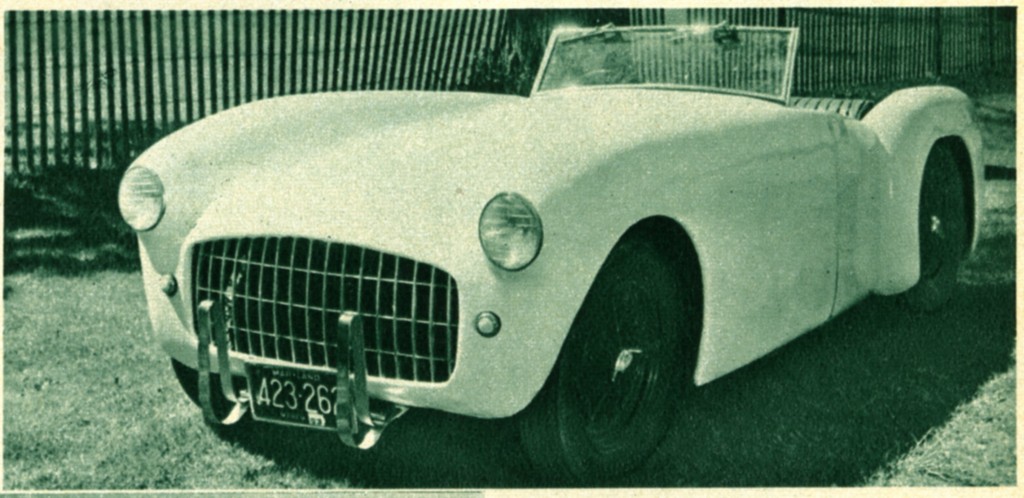
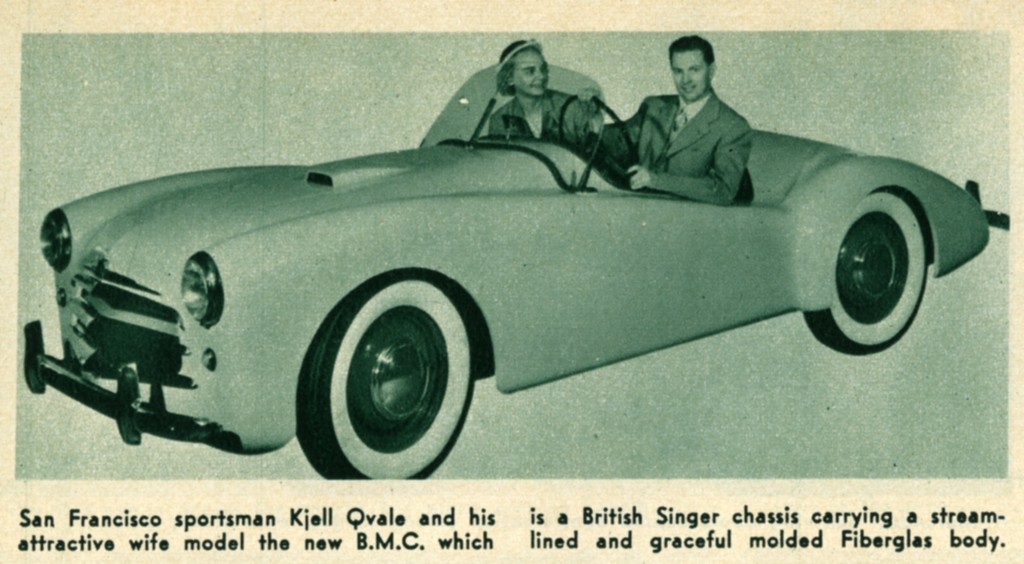

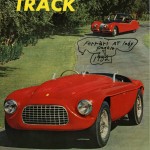
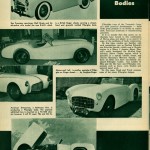
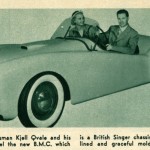
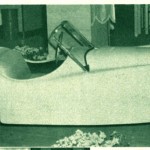
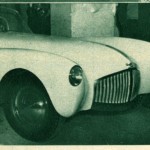
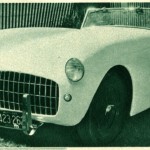
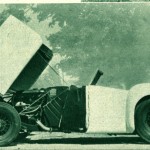
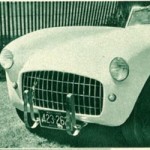
Hello Geoff;
You’ve uncovered an AMAZING number of plastic fantastics! It seems that Singer exported the majority of their cars here and for so many to have disappeared is odd!
Is that because of a total lack of support and parts availability? I recall seeing a number of carcusses in South San Jose in the 60’s evidentally being picked for their bits by the nearby sports car shop.
cheers
Michael